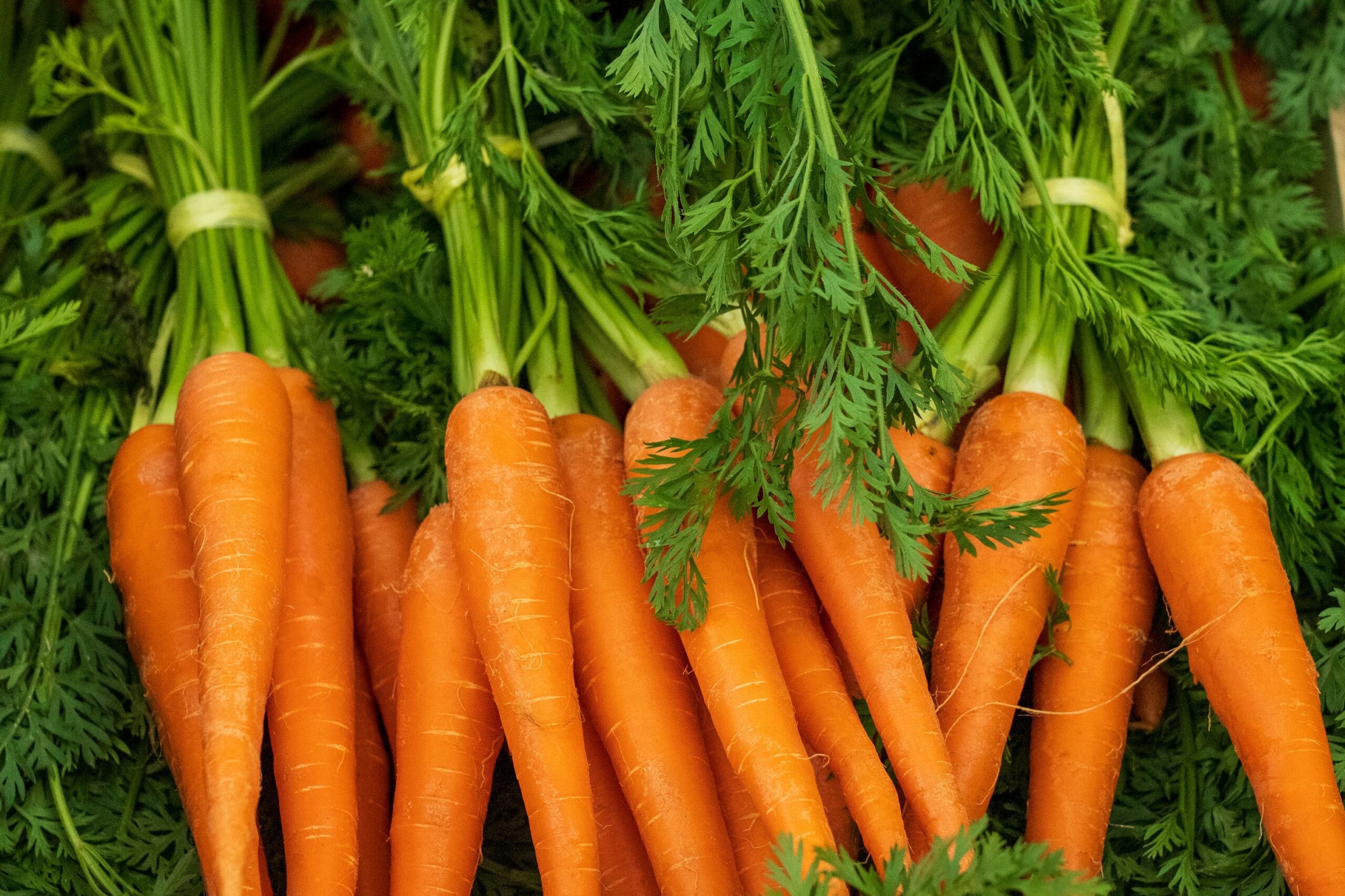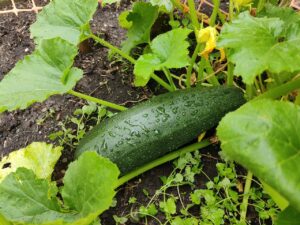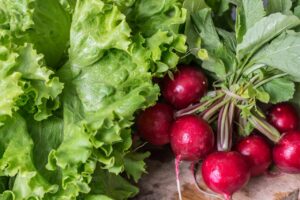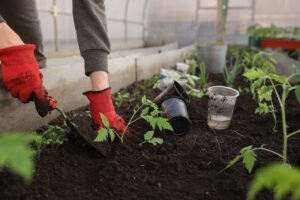Cultivate a Bountiful Carrot Garden
Growing your own vegetables can be a fulfilling and rewarding experience, and one vegetable that is relatively easy to grow is carrots. Not only are they packed with nutrients, but they also taste delicious in a variety of dishes, from salads to stews. This article will cover how to grow carrots, including different varieties, planting methods, caring for the plants, and harvesting them.
Carrot Varieties
Before diving into the details of how to grow carrots, it’s essential to understand the different types of carrots you can choose. Some of the most common varieties include:
- Nantes Carrots – These carrots are shorter and thicker than Imperator carrots, with a blunt end. They are a popular choice for juicing because they are sweeter than other varieties.
- Chantenay Carrots – These carrots are shorter and wider than Imperator carrots, with a rounded end. They are a good choice for container gardening because they don’t require as much space to grow.
- Imperator Carrots – These are the most common type of carrots found in supermarkets, and they have a tapered shape with a pointed end. They typically grow to around 8-10 inches in length.
- Danvers Carrots – These carrots are wider at the top and narrower at the bottom, with a slightly tapered shape. They are a good choice for growing in heavy soil because they are more tolerant of clay.
How to Grow Carrots
Step-by-Step Guide to Growing Carrots from Seed
Growing carrots from seed is an easy and affordable way to start your own crop of carrots. Here’s how to grow carrots from seed:
- Choose high-quality seeds – Look for seeds that are fresh and of good quality. Avoid seeds that are discoloured or have a lot of debris or dust.
- Prepare the soil – Carrots prefer well-drained soil that is free of rocks and other debris. Before planting, loosen the soil to a depth of at least 12 inches and mix in some organic matter, such as compost or well-rotted manure.
- Plant the seeds – Carrot seeds are tiny, so it’s important to sow them thinly to avoid overcrowding. Create shallow furrows in the soil, no more than 1/4 inch deep, and sow the seeds about 2 inches apart. Cover the seeds with a thin layer of soil and water gently.
- Keep the soil moist – Carrots need consistent moisture to germinate, so it’s important to keep the soil moist but not waterlogged. Water regularly, especially during dry spells, but avoid overwatering, which can cause the seeds to rot.
- Thin the seedlings – Once they have grown a few inches tall, you’ll need to thin them to avoid overcrowding. Use scissors or clippers to snip off the weaker seedlings, leaving about 2 inches of space between each plant.
- Care for the plants – Follow the tips outlined in the “Caring for Carrots” section above to ensure your carrot plants grow strong and healthy.
Growing carrots from seed is a great way to get started with vegetable gardening, and it’s a fun and rewarding experience to watch your seeds grow into healthy plants. With patience and care, you can harvest your crop of delicious, nutritious carrots.
How Long for Carrots to Germinate?
Carrots can germinate for up to 2-3 weeks, depending on the soil temperature and moisture level. In cooler soil, they may take longer to germinate. To speed up germination, you can soak the seeds in water for a few hours before planting or cover the soil with a plastic sheet to retain moisture.
How to Plant Carrots
Carrots are a cool-weather crop, and they prefer temperatures between 60-65°F (15-18°C). If you live in a region with a longer growing season, you can plant carrots in both the spring and fall. Here’s how to plant carrots:
- Choose a location – Carrots prefer well-drained soil that is free of rocks and other debris. They also require full sun, so choose a location in your garden that gets at least six hours of direct sunlight daily.
- Prepare the soil – Before planting, loosen the soil to a depth of at least 12 inches and mix in some organic matter, such as compost or well-rotted manure. This will help improve soil texture and provide nutrients for your plants.
- Plant the seeds – Carrot seeds are tiny, so it’s important to sow them thinly to avoid overcrowding. Create shallow furrows in the soil, no more than 1/4 inch deep, and sow the seeds about 2 inches apart. Cover the seeds with a thin layer of soil and water gently.
- Keep the soil moist – Carrots need consistent moisture to germinate, so it’s important to keep the soil moist but not waterlogged. Water regularly, especially during dry spells, but avoid overwatering, which can cause the seeds to rot.
How to Grow Carrots in Containers
If you don’t have a garden or your soil is heavy and unsuitable for growing carrots, you can still grow them in containers. Here’s how to do it:
- Choose a container – Carrots need deep soil to grow, so choose a container that is at least 12 inches deep. You can use a pot, a bucket, or even a grow bag.
- Prepare the soil – Fill the container with a mixture of potting soil and compost, leaving about an inch of space at the top.
- Plant the seeds – Sow them thinly, about 2 inches apart, and cover them with a thin layer of soil.
- Keep the soil moist – Water regularly to keep the soil moist but not soggy. You may need to water more frequently than you would in a garden, as containers tend to dry out faster.
Caring for Carrots
Once your carrots have germinated, caring for them is important to ensure they grow strong and healthy. Here are some tips for caring for your carrot plants:
- Thin the seedlings – Once they have grown a few inches tall, you’ll need to thin them to avoid overcrowding. Use scissors or clippers to snip off the weaker seedlings, leaving about 2 inches of space between each plant.
- Fertilize – Carrots don’t require a lot of fertilizer, but they do benefit from a light feeding of balanced fertilizer every 3-4 weeks. Avoid fertilizers high in nitrogen, which can cause the carrots to grow lots of leaves and not enough roots.
- Weed regularly – Weeds can compete with your carrot plants for nutrients and water, so it’s important to weed regularly. Be careful when weeding around your carrot plants, as their roots are delicate and can easily be damaged.
- Water deeply – Carrots prefer consistent moisture, but they don’t like to be waterlogged. Water deeply once a week, and adjust your watering schedule based on the weather and soil conditions. Avoid overhead watering, as this can cause the foliage to rot.
- Protect from pests – Carrots are susceptible to a variety of pests, including carrot rust fly, carrot weevil, and aphids. Monitor your plants regularly and use organic methods, such as insecticidal soap or neem oil, to control pests.
How Long Does it Take to Grow Carrots?
Carrots typically take 70-80 days to mature, but this can vary depending on the variety and growing conditions. Some varieties, such as Nantes and Chantenay, may mature faster than others. Planting your carrots in cooler weather, such as in the fall, may take longer to mature.
How to Harvest Carrots
Carrots are typically ready to harvest 70-80 days after planting, depending on the variety and growing conditions. Here’s how to harvest your carrots:
- Check for readiness – Carrots are ready to harvest when they are about 1/2 inch in diameter at the top and have reached their mature length. You can also gently pull back the soil around the top of the carrot to check its size.
- Loosen the soil – Before harvesting, loosen the soil around the carrots with a fork or trowel to make it easier to pull them out.
- Pull the carrots – Grasp the top of the carrot and gently pull straight up. If the carrot doesn’t come out easily, use a fork or trowel to loosen the soil around it.
- Store the carrots – Brush off any excess soil and remove the foliage once harvested. Store the carrots in a cool, dry place like a root cellar or refrigerator. Carrots can last for several weeks or even months if stored properly.
Carrot Companion Plants
Companion planting is the strategic placement of different plants near each other, offering mutual benefits like pest control, improved pollination, and enhanced growth. Many companion plants can boost their health and yield when it comes to carrots.
Herbs:
- Chives: Repel carrot flies and other pests with their strong scent.
- Sage: Deters many pests with its strong aroma and attracts beneficial insects.
- Rosemary: Repels pests with its aromatic scent and attracts helpful insects.
Vegetables:
- Tomatoes: Produce solanine, which deters carrot pests and benefits from carrots’ soil-loosening properties.
- Onions: Confuse and repel carrot flies with their smell.
- Leeks: Deter carrot flies, similar to onions.
- Lettuce: Conserve space and maintain soil moisture without competing with carrots for nutrients.
- Radishes: Break up the soil for better carrot root development and suppress weeds.
- Peas: Fix nitrogen in the soil, providing natural fertilizer for carrots.
Flowers:
- Marigolds: Repel various pests, including aphids and nematodes, and attract beneficial insects like ladybugs.
- Nasturtiums: Repel pests like aphids, attract beneficial insects, and draw in pollinators with their bright colours.
By incorporating these herbs, vegetables, and flowers as companion plants for carrots, you can create a supportive environment for your carrot plants, resulting in a healthier and more bountiful harvest.
Plants to Avoid
While carrots benefit from companion planting with several other plants, there are some plants you should avoid growing near carrots. These plants may compete for nutrients and water or negatively impact the growth and health of your carrot crop:
Herbs:
- Mature Dill: While young dill plants can attract beneficial insects, mature dill can inhibit the growth of carrot plants. Remove dill plants once they start flowering to prevent negative effects on carrot growth.
Vegetables:
- Potatoes: Carrots and potatoes have similar nutrient requirements, leading to competition for nutrients and water, which can reduce the growth and yield of both crops.
- Celery: Carrots and celery share common pests, such as carrot flies and celery worms. Planting them together can increase the likelihood of pest infestations, affecting the health and productivity of both crops.
- Parsnips: Carrots and parsnips are susceptible to similar pests and diseases, including carrot flies, root-knot nematodes, and various fungal diseases. Planting them together may encourage the spread of these issues throughout your garden.
Flowers:
- None: No specific flowers are known to impact the growth and health of carrot plants negatively. However, it is essential to consider the overall balance of your garden ecosystem and ensure that your chosen flowers do not attract pests or create competition for nutrients and water with your carrot plants.
By being mindful of these potentially harmful plant combinations, you can better plan your garden layout to ensure a healthy and bountiful carrot harvest.
Conclusion
Growing carrots is a fulfilling and rewarding experience, whether you’re a seasoned gardener or a beginner. You can harvest a bountiful crop of delicious, nutritious carrots by choosing the right variety, planting in the right conditions, and providing proper care. Whether you choose to grow carrots from seed or transplant, the key is to ensure they receive enough sunlight, water, and nutrients to thrive. By following the step-by-step guide outlined in this article, you can learn how to grow carrots from seed, plant carrots, and which carrot varieties to choose from. Remember, it takes patience and dedication to grow a successful crop of carrots, but the rewards are well worth the effort. So why not give it a try? With a little bit of knowledge and a lot of love, you can grow your own carrots and enjoy the fruits of your labour.




